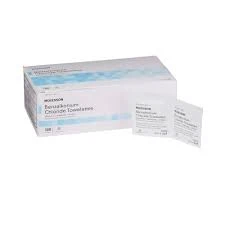Chemical Coagulation and Flocculation Techniques for Effective Water Treatment Solutions
Chemical Coagulation and Flocculation in Water Treatment
Water treatment processes are vital for providing safe and clean drinking water to communities and industries worldwide. Among these processes, chemical coagulation and flocculation play a crucial role in the removal of suspended solids, colloidal particles, and pathogens. This article explores the principles of chemical coagulation and flocculation, their significance in water treatment, and the various chemicals used in these processes.
Understanding Coagulation and Flocculation
Coagulation is the first step in water treatment, aiming to destabilize suspended particles present in the water. These particles often carry negative electrical charges, which cause them to repel one another, preventing them from clumping together. Coagulation uses chemical additives, known as coagulants, to neutralize the charges of these particles. Once the particles are neutralized, they can begin to aggregate, a process known as flocculation.
Flocculation follows coagulation and involves gentle mixing to promote the growth of larger aggregates, known as flocs. These flocs, composed of clumped particles, are easier to remove from water through sedimentation or filtration. The efficiency of these two steps is critical in achieving high-quality treated water.
The Role of Coagulants
Common coagulants used in water treatment include aluminum sulfate (alum), ferric sulfate, and polyaluminum chloride. Each coagulant has unique properties and efficiencies, influencing the choice based on the specific water quality and treatment goals.
1. Aluminum Sulfate (Alum) Alum is the most widely used coagulant in water treatment and is effective in removing turbidity, organic materials, and microorganisms. It is cost-effective and readily available, making it a popular choice in municipal water treatment plants.
2. Ferric Sulfate This coagulant is particularly effective in treating water with high organic content or color. Ferric sulfate can also assist in removing phosphates, which is beneficial for preventing algal blooms in surface water sources.
chemical coagulation and flocculation water treatment

3. Polyaluminum Chloride (PAC) PAC offers several advantages, such as lower sludge production and improved removal rates of turbidity and organic compounds. Its effectiveness at varying pH levels makes it a versatile option for different water treatment conditions.
The Flocculation Process
After coagulation, the flocculation process begins. This phase involves slow mixing of the water, allowing the small flocs to collide and connect, forming larger aggregates. The flocculation process is typically divided into three stages slow mixing, formation, and growth of flocs.
During the slow mixing stage, the energy input is carefully controlled to reduce shear forces on the flocs, preventing breakage while allowing for collision. Various flocculating agents, such as polymeric substances, may be added during this stage to enhance the floc formation process. These polymers help bridge the gaps between particles, promoting the creation of larger, more robust flocs.
Sedimentation and Filtration
Once the flocs have formed, they are removed from the water through sedimentation or filtration. In sedimentation, the water is allowed to sit in a basin or tank, where the larger flocs settle to the bottom due to gravity. The settled solids, known as sludge, are then removed for disposal or further treatment.
Filtration involves passing the treated water through various media, such as sand or anthracite, which capture remaining particles and flocs, ensuring that the water meets safety standards before distribution. The combined effect of coagulation, flocculation, sedimentation, and filtration significantly improves water quality, reducing turbidity, color, and harmful microorganisms.
Conclusion
Chemical coagulation and flocculation are essential processes in modern water treatment, effectively improving the quality of drinking water. By utilizing coagulants and flocculants, water treatment facilities can ensure the efficient removal of impurities, safeguarding public health and the environment. As water quality standards continue to evolve, ongoing research and development of new and improved coagulants will be vital to enhance these processes further, maintaining the availability of safe water resources for future generations.
-
Scale and Corrosion Inhibitors: Key to Industrial Water TreatmentNewsMay.22,2025
-
Organic Phosphate: Structure, Properties, and ApplicationsNewsMay.22,2025
-
Isothiazolinones: a versatile and versatile biocide with a wide range of applicationsNewsMay.22,2025
-
Industrial Flocculant: The Key to Optimizing Industrial ProcessesNewsMay.22,2025
-
Hydrolyzed Polymaleic Anhydride: Structure, Properties, and ApplicationsNewsMay.22,2025
-
Application of Flocculant in Water TreatmentNewsMay.22,2025





